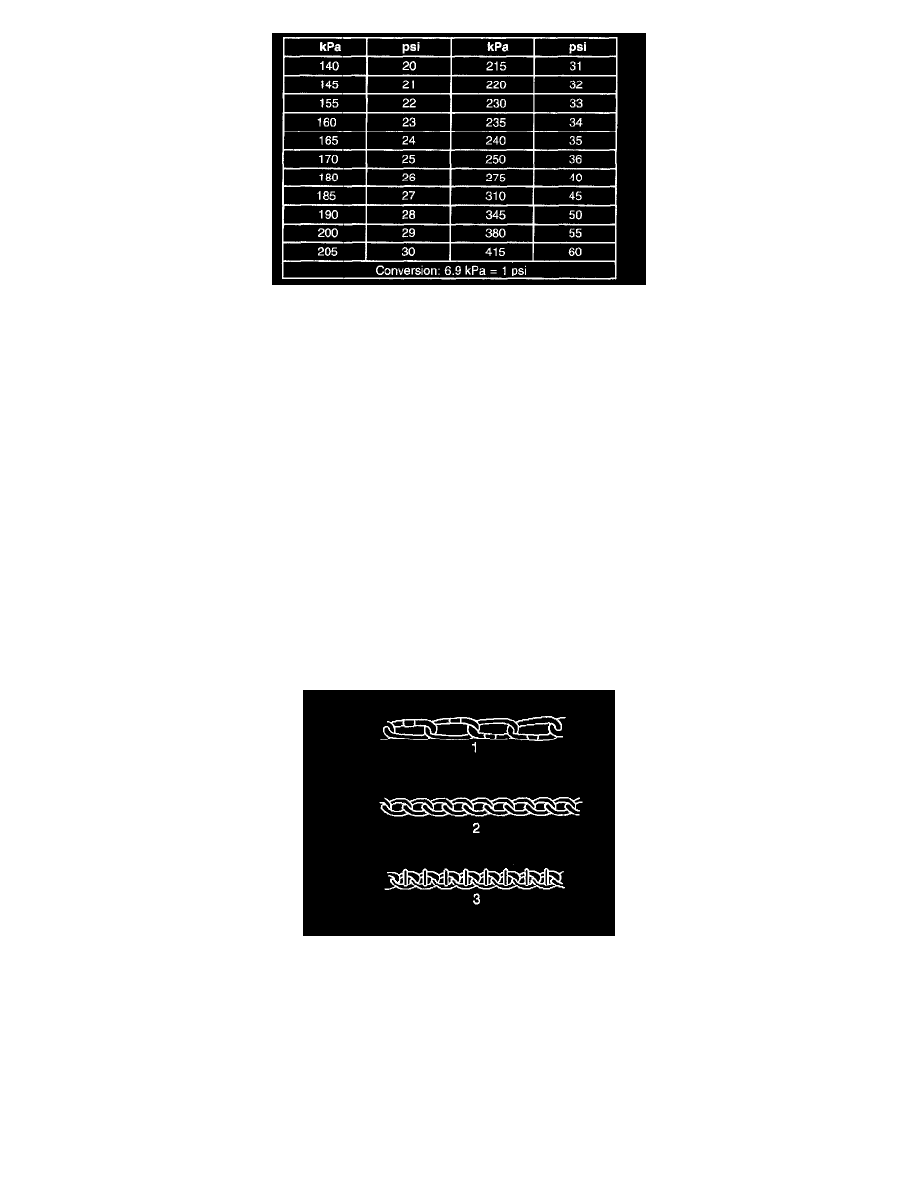Colorado 2WD L5-3.5L VIN 6 (2005)

Inflation Pressure Conversion (Kilopascals to PSI)
Tires with a higher than recommended pressure can cause the following conditions:
^
A hard ride
^
Tire bruising
^
Rapid tread wear at the center of the tire
Tires with a lower than recommended pressure can cause the following conditions:
^
A tire squeal on turns
^
Hard steering
^
Rapid wear and uneven wear on the edge of the tread
^
Tire rim bruises and tire rim rupture
^
Tire cord breakage
^
High tire temperatures
^
Reduced vehicle handling
^
High fuel consumption
^
Soft riding Unequal pressure on the same axle can cause the following conditions:
^
Uneven braking
^
Steering lead
^
Reduced vehicle handling.
Tire Chain Usage Description
When you use tire chains, most current vehicles require the following chain types:
^
SAE Class S or 1100 Series, Type PL tire chains (1)
^
SAE Class U or 1200 Series, Type P tire chains (2)
^
1800 Series Lug Reinforced tire chains (3)
These chains are specially designed in order to limit the fly-off effect that occurs when the wheel rotates.
Manufacturers of tire chains have a specific chain size for each tire size. These ensure a proper fit when the chains are installed. Purchase the correct
chains for the tires on which the chains will be used. Do not use rubber adjusters to take up slack in chains that are loose due to incorrect size. Always
follow the chain manufacturer's installation instructions.
